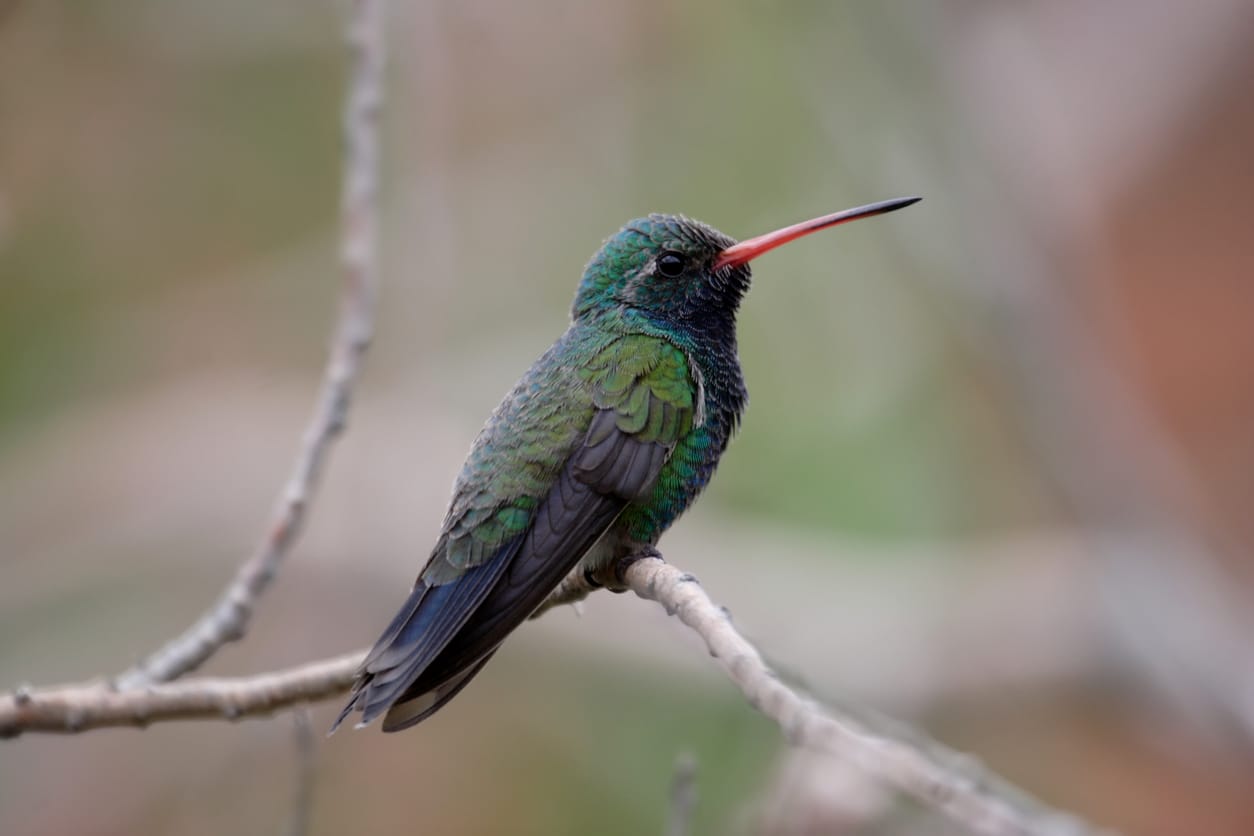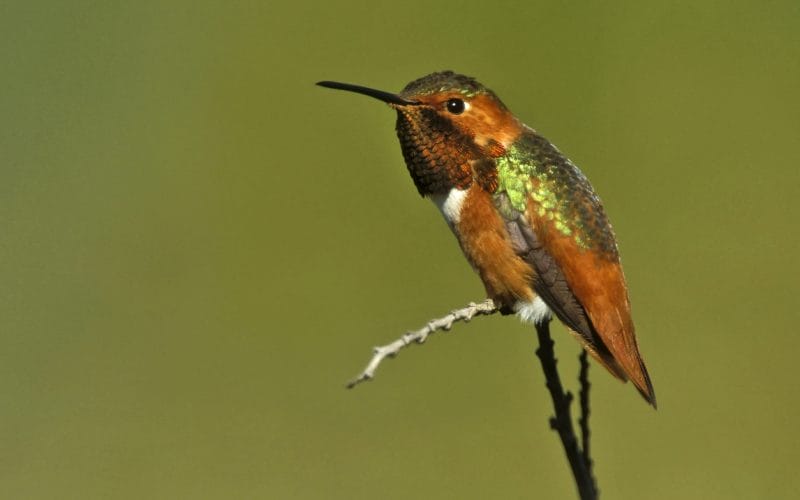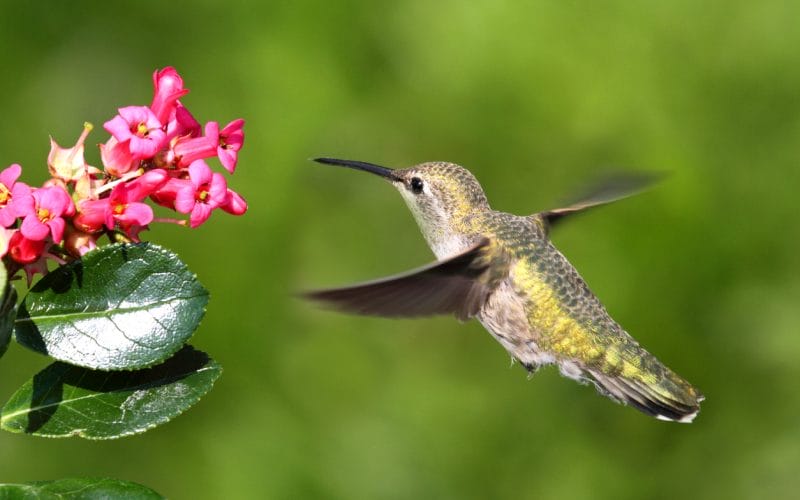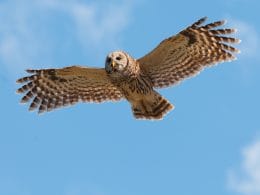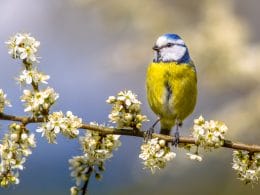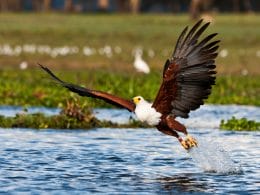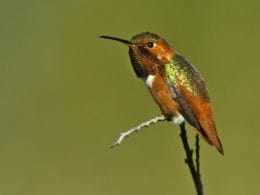Hummingbirds are nectar-feeding birds that are divided into around 300 different species around the world. Note also that there are subtypes of these species.
These birds are found in big numbers throughout the United States. However, there aren’t many native birds in Minnesota. The ones in Minnesota most likely come from surrounding states and countries.
That being said, if you’re based in Minnesota and are fascinated by hummingbirds, this article is for you, as we’ll list seven hummingbirds that you can spot in Minnesota.
Let’s jump right in!
7 Most Common Hummingbirds in Minnesota
1. Ruby-Throated Hummingbird
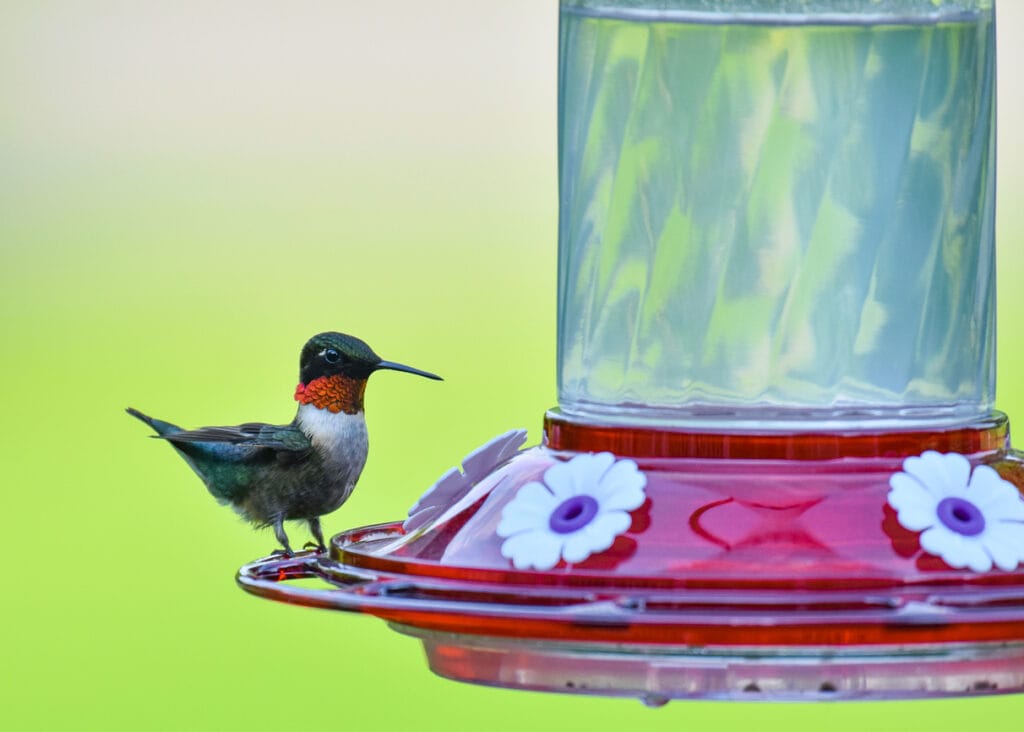
- Scientific Name: Archilochus colubris
- Length: 2.9-3.5 inches
- Weight: 0.10 ounces
- Wingspan: 4 inches
By far, the most widespread hummingbird in the United States is the Ruby-throated Hummingbird. They live in Minnesota throughout the year, and are the most common species of hummingbirds in Minnesota. They can also be seen in Central and North America, Mexico, and Canada.
Author Note: Ruby-throated Hummingbirds are small hummingbirds with greenish backs and crowns as well as pale underparts. Their necks are red and may appear darker in indirect sunlight.
These birds are famed for their remarkable speed. They can reach a top speed of 25 miles per hour when flying. These hummingbirds can beat their wings at a rate of roughly 53 beats per second. They frequently hover and also fly in reverse and upturned.
Ruby-throated Hummingbirds can quickly become exhausted due to their small size. Their hearts can beat at a rate of 600-1,200 beats per minute, depending on how hard the bird is functioning.
Despite their small size, these birds have a big appetite. The amount of sugar that they must consume daily should be at least 50% of their weight. The birds must eat five to eight times per hour.
The nectar of different flowers is consumed by Ruby-throated Hummingbirds, but they favor tubular flowers since they’re easier for their tongue to glide through.
Like many other birds, these hummingbirds have excellent color vision. They can perceive hues in the UV spectrum that are unseen to man. The colors of flowers attract these birds, and they prefer to eat nectar from red and orange flowers.
Insects also give a significant amount of protein. Protein is necessary for muscle and plumage growth. Ruby-throated Hummingbirds are found in wooded areas as well as gardens with a lot of floral plants.
2. Costa’s Hummingbird

- Scientific Name: Calypte costae
- Length: 3.5 inches
- Weight: 0.10 ounces
- Wingspan: 4.3 inches
Costa’s Hummingbirds can often be found in Minnesota. They’re classified as an accidental species in Minnesota. This term implies they’re not native to the state but have crossed the state line. They’re one of the most common hummingbirds in Minnesota.
Costa’s Hummingbirds are small birds; even an adult is considered small in size. They look stunning with their brilliant vivid violet crown and neck patches. Their stomachs are white with green coloring on the sides.
The birds are sexually dismorphic as the females are larger than the males. To add, the females have more white on their bellies than males who have a purple tint.
The majority of these hummingbirds are desert hummingbirds. They usually live in California, Arizona, Nevada, and Utah. They do, however, frequently migrate to neighboring states, such as Minnesota.
The birds seek out dry environments, especially sunny deserts and regions with shrubs. These birds eat nectar from various desert plants, such as agave and desert honeysuckle, as part of their diet. They also eat flying insects as well as insects that crawl around flowers.
The Costa’s Hummingbird, like many other birds, can enter a state known as torpor during cold days. This state is a hibernation-dormant mode in which the birds’ metabolism slows down.
Their heart and breathing rate both slow down, allowing them to save energy. Torpor allows the birds to withstand times when food is scarce.
3. Anna’s Hummingbird

- Scientific Name: Calypte Anna
- Length: 4 inches
- Weight: 0.1-0.2 ounces
- Wingspan: 4.7 inches
Anna’s Hummingbird is named after Anna Massena, Duchess of Rivoli. They’re considered to be versatile birds that can adapt to different environments. Anna’s Hummingbird, like Costa’s, is an accidental species.
Because of its range, the bird has been able to broaden its distribution to include many other states. Some of these states include Minnesota. The bird is originally from North America’s western coastal areas.
Top Tip: Anna’s Hummingbird is a medium-sized hummingbird. They’re primarily green and gray, with glossy bright red feathers on their heads and necks.
The diet of Anna’s Hummingbird is similar to that of other hummingbirds. Nectar and insects are their main sources of nutrition.
The birds’ bodies are designed to make nectar-feeding simple. The tongue of these birds, like that of most hummingbirds, is long and extensible. These tongues are so lengthy that they wrap up around their skulls and eyes when they’re withdrawn.
Males and females both mate with multiple partners during the mating season. Males execute flight displays over their regions to chase away males or outsiders. If the show wins over the female, they mate.
The female nurtures her children without the male’s help. She constructs the nest with twigs, feathers, and plant fibers. Spider silk is used to bind the contents of the nest together.
Although Anna’s Hummingbirds aren’t threatened, they do face some risks. Some of these threats include habitat degradation and predation by other bigger animals.
4. Rivoli’s Hummingbird
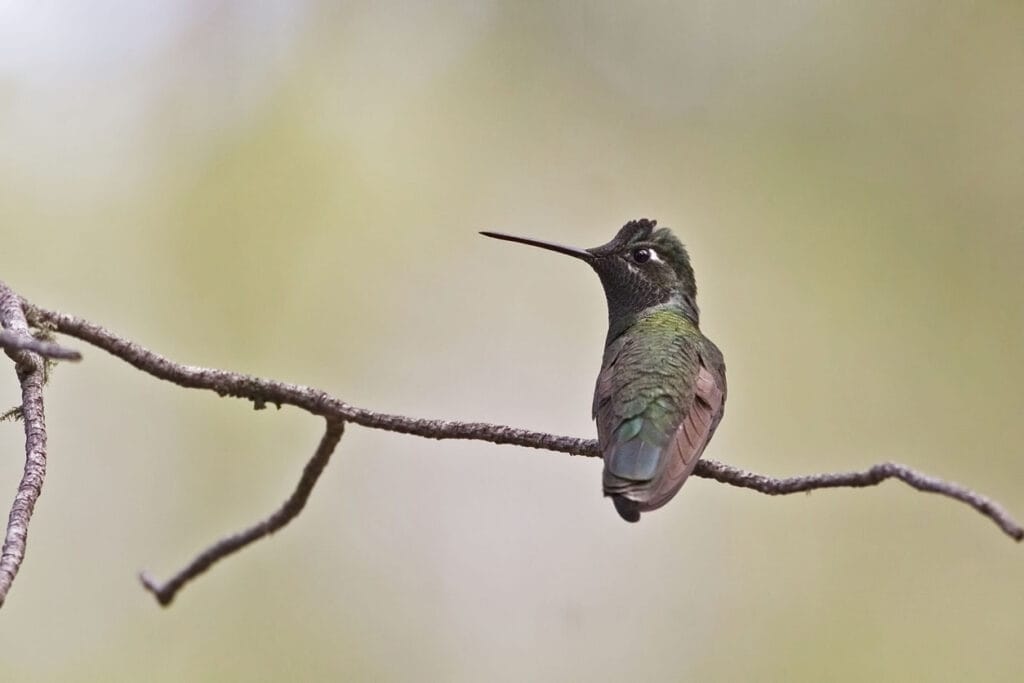
- Scientific Name: Eugenes fulgens
- Length: 4.3–5.5 inches
- Weight: 0.21-0.35 ounces
- Wingspan: 7.1 inches
The name of this bird may sound similar to Anna’s Hummingbird’s origin. That is because it was named after Anna Massena’s husband, the Duke of Rivoli.
This particular hummingbird is well-known for its beautiful green and purple coloring. The bird features a purple head, emerald gorget, and green upperparts. Additionally, it has one of the lengthiest bills among all hummingbirds.
Rivoli’s Hummingbirds are fairly big and easy to recognize. They have a long and tall physique in comparison to other hummingbirds. After the Blue-throated Mountain-gem, it’s the second-largest hummingbird north of Mexico.
It appears that the bird flies slower than the lesser hummingbirds due to its size. The bird may even glide at times.
In highland areas, these hummingbirds live in pine-oak forests. They mainly breed in the Texas, Arizona, and New Mexico highlands. They may, however, be seen in Minnesota as they’re considered an accidental species.
These birds prefer to build their nests between 5,000 and 9,000 feet above the ground. Males, especially during mating season, sit boldly and vigorously to protect their feeding zones.
The Rivoli’s Hummingbird has been observed crossbreeding with other hummingbird species. However, this is a rare occurrence.
The Blue-Throated Mountain-Gem, Violet-Crowned Hummingbird, and Berylline Hummingbird are some of the known species that have mixed with this bird.
5. Green Violet-Ear Hummingbird

- Scientific Name: Colibri thalassinus
- Length: 4.25-4.5 inches
- Weight: 0.16-0.19 ounces
- Wingspan: 2.3-2.7 inches
Mexican Violet-Ear is another name for Green Violet-Ear hummingbirds. These brightly-colored birds live in Central America and Mexico, and they move around a lot as the weather changes. As a result, they can be found throughout Canada and in a variety of states, including Minnesota.
The top feathers of these lovely hummingbirds are emerald green. They also have a dark blue tail, as well as a bluish head and back.
Mountain forests and woodland clearings are all good places to look for these birds. They enjoy humid environments, and you may see them in open spaces more.
Author Note: Green Violet-Ear consumes nectar from a range of colorful and fragrant flowers. They also tend to look specifically for the flower with the richest amount of sugar.
During the mating season, the Green Violet-Ears also enjoy eating small spiders and bugs. Insects are frequently caught while flying or grabbed from leaves and branches. They can also be snatched from spider webs.
Insects are necessary for newborns since they’re a good supply of proteins that aid in the juvenile’s growth.
When it comes to the feeding zones, these hummingbirds are fiercely protective. They fight to defend the regions with high amounts of nectar-producing flowers. Males actively scare away other males, as well as big bugs, from their domain.
6. Rufous Hummingbird

- Scientific Name: Selasphorus rufus
- Length: 3.5-4 inches
- Weight: 0.12 ounces
- Wingspan: 4.25 inches
The Rufous Hummingbird isn’t native to Minnesota. However, they’re frequently seen there during their migration season in early May.
Hummingbirds in this species are small and russet in color. These birds have a peachy gorget and a milky or khaki underbelly. They also have reddish markings in the emerald tail and vivid orange color on the back and belly.
The Rufous Hummingbird feeds primarily on nectar and insects. They enjoy sucking nectar from flowers with their long tongues. Additionally, they’ll eat small insects.
Hummingbird feeders are an excellent way to attract them to your yard. Sugar-water mixes in hummingbird feeders will attract these birds.
A nice tidbit to know is that Rufous Hummingbirds have been known to return to old feeders long after they were taken down. So, the birds are more inclined to pay you a visit more than once.
Their conservation status appears to be stable and widespread. However, their population numbers have been declining in recent years. Because their habitat is impacted by climate change, they’re vulnerable.
Rufous Hummingbirds like woodland margins, streamside habitats, and highland meadows. They like to spend their winters in Mexico’s pine-oak forests.
Their nest is normally hidden in the lower branches of trees and bushes. Grass, silk webs, and other soft items make up the nest. Nests from past seasons are frequently renovated and used.
Rufous Hummingbirds are very protective and can attack other birds and animals. They’re brave and they have a habit of attacking larger animals that get too near to their nesting site.
The female usually produces two eggs, and the age of the first flight is around 21 days. During that time, the mother will feed the young birds insects that are often mixed with nectar.
7. Calliope Hummingbird
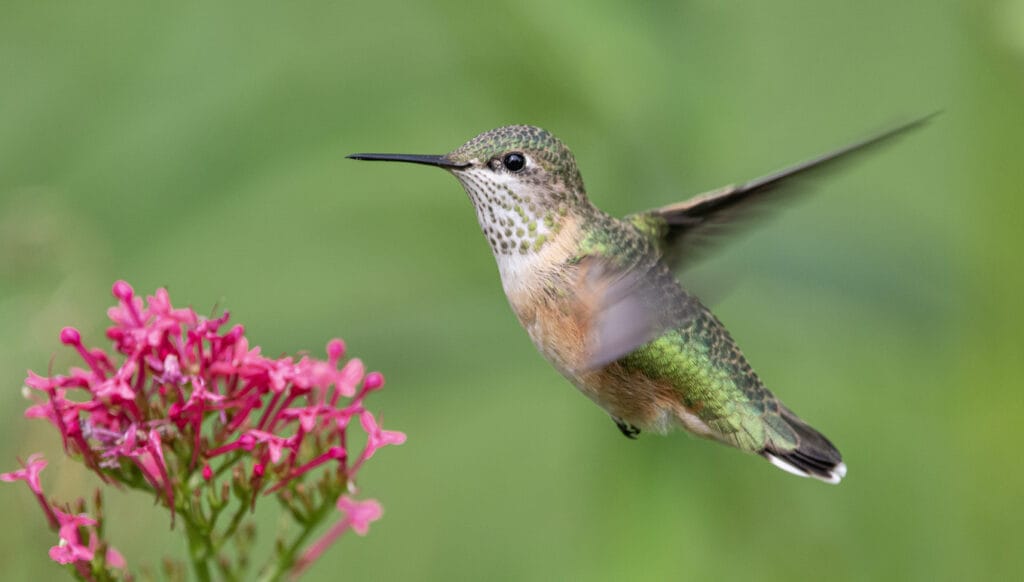
- Scientific name: Selasphorus calliope
- Length: 2.8-3.9 inches
- Weight: 0.071 to 0.106 ounces
- Wingspan: 4.3 inches
The Greek muse of rhetoric and ancient poetry, Calliope, inspired the name of this bird. The Calliope Hummingbird is a small-sized hummingbird with a short bill and tail. They have a black tail and a vibrant pink gorget. They also have a shiny green backside.
The Calliope Hummingbird is considered to be the smallest bird in the country. In Minnesota, these birds are classified as accidental hummingbird species.
These birds are the smallest long-distance bird migrants. They’re capable of flying more than 5000 miles annually.
Author Note: The Calliope Hummingbird can be territorial as they prefer to be secluded in their areas. They only engage with one another during the mating season.
Trespassers are strongly fought by the males in their mating and feeding areas. Despite their small size, they’re capable of chasing away larger birds like Red-Tailed Hawks.
The Calliope Hummingbirds like to reproduce in highlands and wide woodlands. These birds, like many other hummingbirds, eat nectar from flowers.
Nectar isn’t the only part of their diet. The birds will also occasionally consume small bugs and spiders. Additionally, they can also consume sap from sapsucker holes, which are likely to contain both sap and bugs.
Calliope Hummingbirds lick the nectar using their tongues rather than sipping it. The Calliope Hummingbirds can lick the nectar up to 15 times per second when eating.
Wrap Up
That concludes our list of the seven most common hummingbirds in Minnesota. When it comes to behavior, all of these birds are similar, but their beauty is unique.
The Ruby-throated Hummingbird is the most widespread of the group. Install a bird feeder or birdbaths in your yard if you want to attract them. The majority of these birds are lured to bird feeders and baths as well and they will flock to them almost immediately.
Take a moment to admire the beauty of whichever bird you come across. We hope you liked our guide on the top hummingbirds in Minnesota.
FAQ
The Ruby-throated and Costa’s Hummingbirds are the most common species seen in Minnesota.
To find out where recent sightings of hummingbirds have been, try eBird. You can search for the latest sightings or particular species or what has been seen in a certain area.




